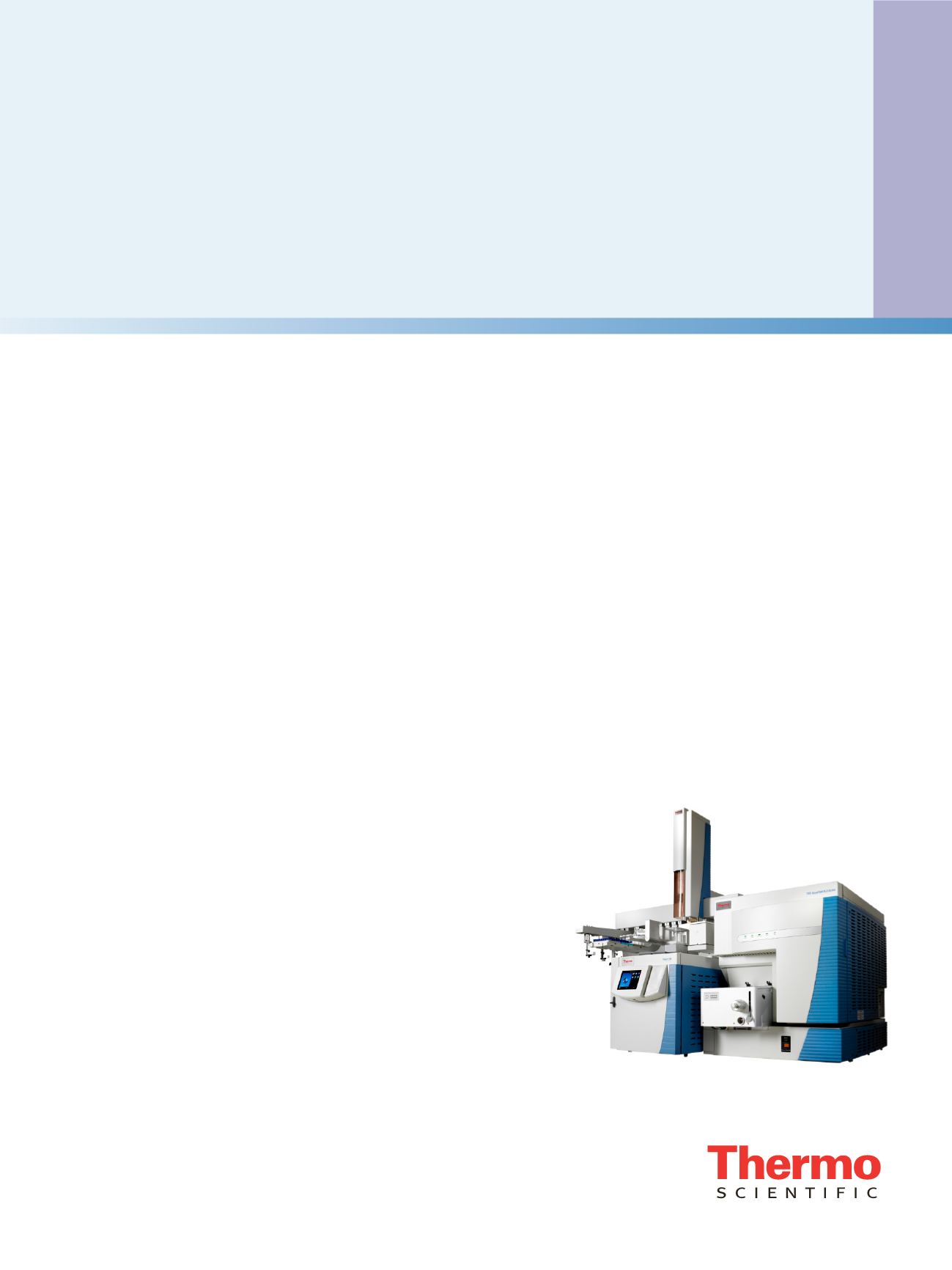
U-SRM – Ultra Selective Detection of
Analytes in Complex Matrix Samples on
the TSQ Quantum XLS Ultra GC-MS/MS
Hans-Joachim Huebschmann, Paul Silcock, Inge de Dobbeleer, Thermo Fisher Scientific, Bremen and Dreieich,
Germany
White Paper 52283
Key Words
GC-MS/MS, U-SRM, Mass Resolution, Matrix, Selectivity,
TSQ Quantum XLS Ultra
Introduction
The Thermo Scientific TSQ Quantum XLS Ultra triple
quadrupole mass analyzer breaks the barrier of low level
matrix interferences for a reliable compound quantitation.
Where single quadrupole analyzers are limited to isobaric
interferences on the same selected ion monitoring mass
(SIM), a triple quadrupole mass spectrometer offers
increased matrix selectivity. With this, triple quadrupole
detection has provided a large step forward in our ability
to detect at very low concentrations in complex matrix.
But, the selectivity of this nominal mass analyzer can be
challenged when some matrix/target combinations are
considered. When analyzing at extremely low concentra-
tions, the overwhelming intensity of matrix compounds
can still provide interferences in some cases, as chemical
noise, on the product ion mass traces. It is not surprising
in this context that different matrices interfere with
different impact. So, what is the technical solution the
TSQ Quantum XLS Ultra™ triple quadrupole GC-MS/
MS system is using to break these barriers and overcome
these typical matrix limitations?
Delivering High Performance Triple
Quadrupole Experiments
The TSQ Quantum XLS Ultra, as shown in Figure 1,
provides enhanced mass resolution capabilities that are
unique to GC-triple quadrupole systems. The specially
designed high precision hyperbolic quadrupoles (Thermo
Scientific HyperQuad quadrupoles), as pictured in
Figure 2, provide enhanced mass resolution and ion
transmission. This increased analyzer performances
allows an extremely low background signal which
simplifies quantification of trace compounds even when
shadowed by hugely intense matrix components, of which
a significant portion exhibit isobaric ions interfering with
the selected reaction monitoring (SRM) process. For trace
analysis in the ppt range, the increased radius of the
HyperQuad™ quadrupole assembly used a 50% larger
diameter between the rods for increased ion transmission
and hence sensitivity.
Of course, high performance quadrupoles are a pre-
requisite for a good GC triple quad system as the mass
analyzers lie at the heart of the performance delivery. In a
triple quadrupole analyzer, the first quadrupole (Q1) that
sits directly behind the ion source and pre-filter, has a
large influence on the target analyte selectivity of the mass
spectrometer. The desired precursor ions, after being
generated in the ion source, are selected by Q1 and are
transmitted to the collision cell (Q2) for fragmentation.
The third quadrupole (Q3) is set to transmit to the
detector only preselected products ions generated in Q2 as
a result of collision induced fragmentation (CID).
Without high-performing quadrupoles, mass selection
capabilities become compromised and tend towards a
lower resolution to transmit the same number of ions.
Systems that do not employ HyperQuad technology have
to open the mass transmission window (above unit mass
resolution) to transmit the same number of ions as a
HyperQuad analyzer in unit mass mode. This decreased
selectivity for target ions can give rise to chemical
Figure 1. TSQ Quantum XLS Ultra enhanced mass resolution
GC-MS/MS system


